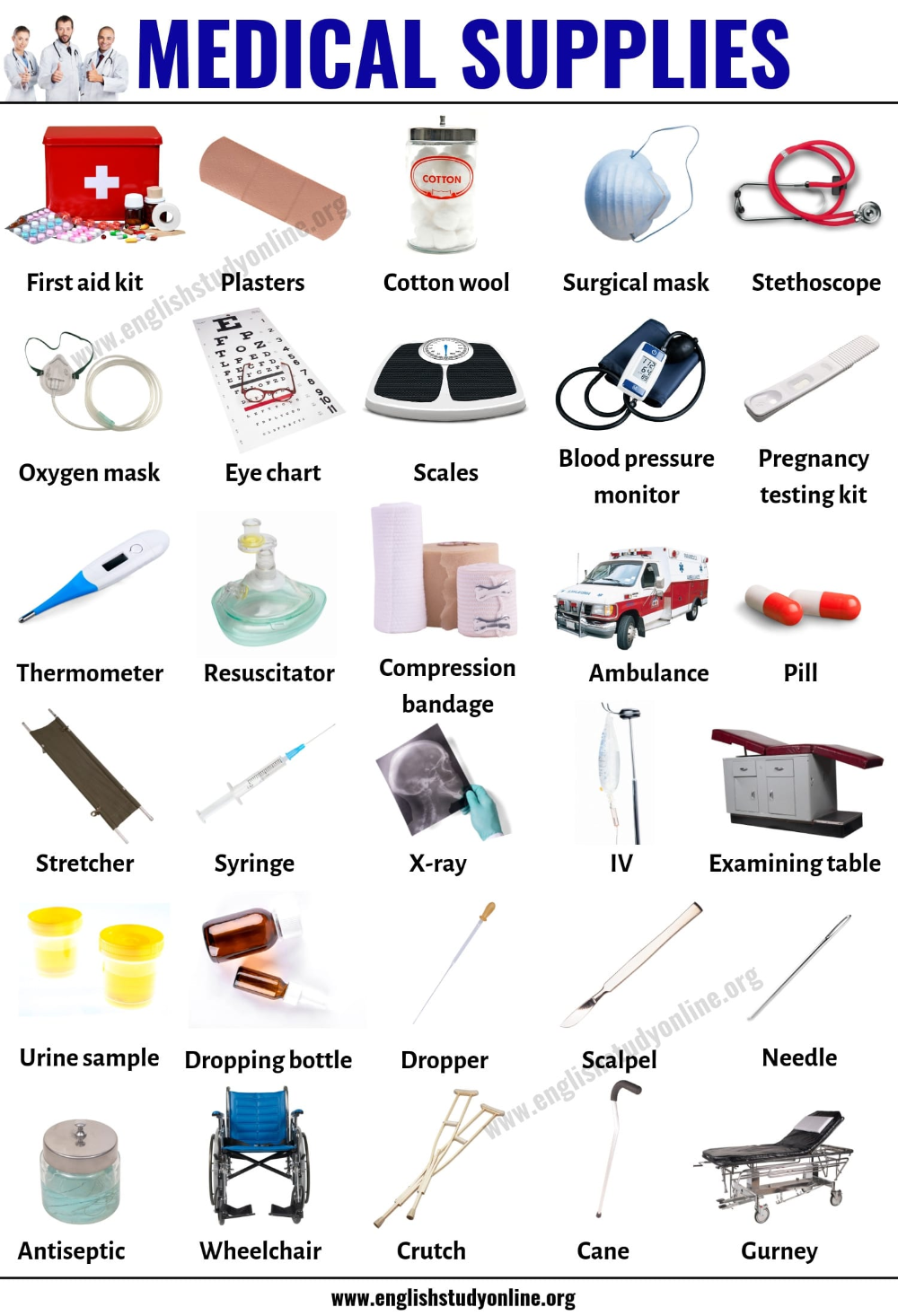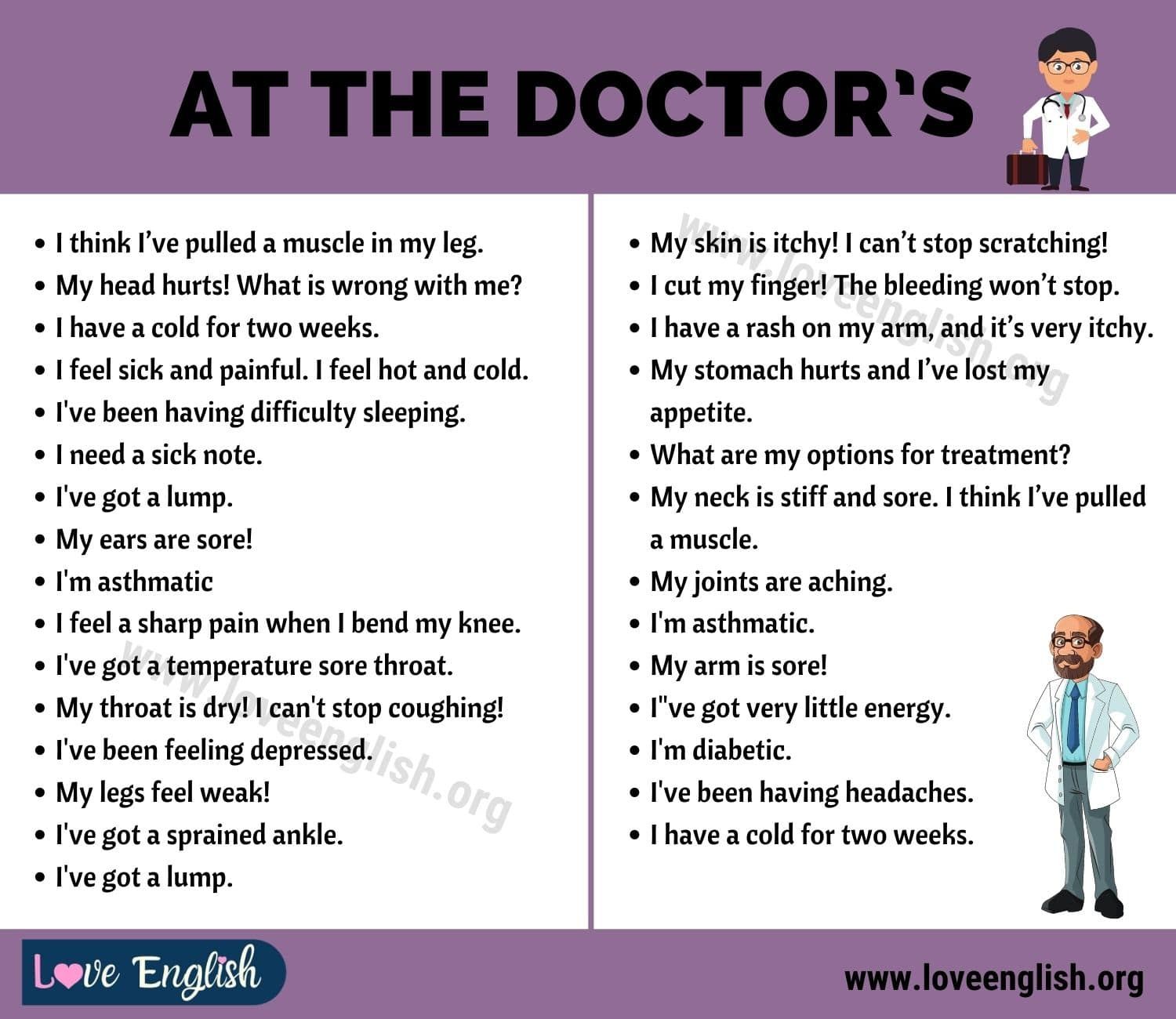Words used by doctors. 75 Essential Medical Terms: A Comprehensive Guide for Patients and Health Enthusiasts
What are the most important medical terms patients should know. How can understanding medical terminology improve communication with healthcare providers. Why is familiarity with common medical abbreviations and acronyms beneficial for patients.
Decoding Basic Medical Terminology
Medical terminology can often seem like a foreign language to patients. However, understanding key medical terms is crucial for effective communication with healthcare providers and comprehension of one’s own health condition. This guide breaks down 75 essential medical terms, abbreviations, and acronyms to empower patients and health enthusiasts with vital knowledge.
Foundational Medical Terms
What are some of the most basic yet important medical terms patients should know? Here’s a primer on fundamental medical vocabulary:
- Acute: A condition with sudden onset and typically short duration
- Chronic: A persistent or long-lasting condition
- Benign: Non-cancerous
- Malignant: Cancerous
- Lesion: An abnormal change in tissue, such as an injury or tumor
- Edema: Swelling caused by excess fluid in body tissues
- Inflammation: The body’s response to injury or infection, characterized by redness, swelling, heat, and pain
Understanding these foundational terms provides a solid basis for grasping more complex medical concepts and discussions with healthcare providers.
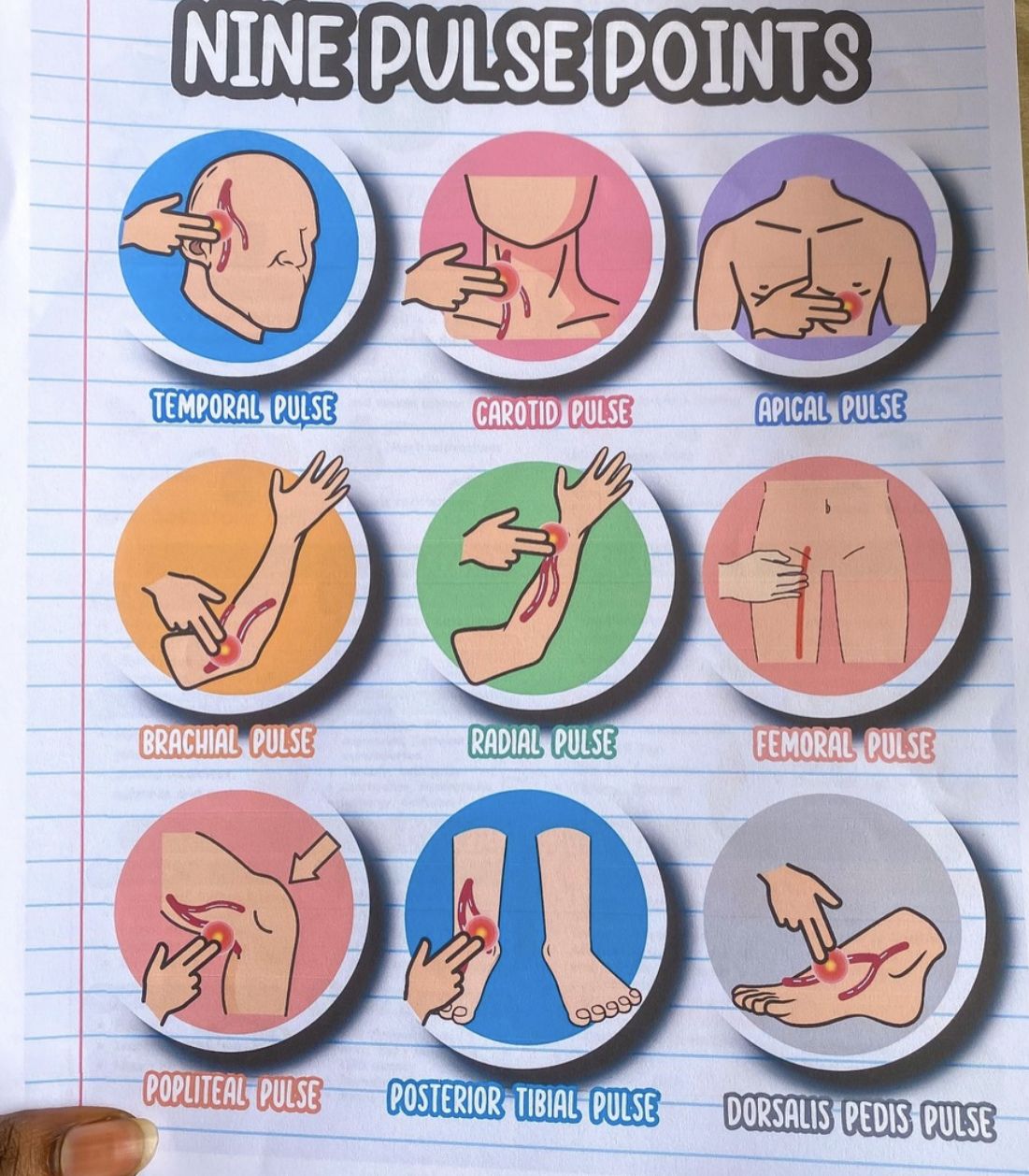
Navigating Medical Prefixes and Suffixes
Many medical terms are constructed using prefixes and suffixes that modify the root word. Familiarizing yourself with common prefixes and suffixes can help decipher unfamiliar medical terminology.
Common Medical Prefixes
- Hyper-: Excessive or above normal (e.g., hypertension – high blood pressure)
- Hypo-: Deficient or below normal (e.g., hypoglycemia – low blood sugar)
- Endo-: Within (e.g., endoscopy – looking inside the body)
- Exo-: Outside (e.g., exoskeleton – external skeleton)
- Peri-: Around (e.g., periodontal – around the tooth)
Common Medical Suffixes
- -itis: Inflammation (e.g., arthritis – inflammation of joints)
- -osis: Abnormal condition or disease (e.g., osteoporosis – bone disease)
- -pathy: Disease or disorder (e.g., neuropathy – nerve disease)
- -ectomy: Surgical removal (e.g., appendectomy – removal of appendix)
- -gram: A record or picture (e.g., electrocardiogram – heart activity record)
By recognizing these prefixes and suffixes, patients can often deduce the meaning of complex medical terms, enhancing their understanding of medical discussions and documentation.

Understanding Vital Signs and Diagnostic Terms
Vital signs are key indicators of a person’s overall health status. Familiarity with these terms is essential for understanding one’s own health metrics and interpreting medical reports.
Key Vital Sign Terms
- Blood Pressure: The force of blood against artery walls, measured as systolic (when the heart beats) over diastolic (when the heart rests)
- Pulse: The number of times the heart beats per minute
- Respiration Rate: The number of breaths taken per minute
- Body Temperature: A measure of the body’s heat, typically around 98.6°F (37°C)
- Oxygen Saturation: The percentage of oxygen in the blood
Common Diagnostic Terms
What are some frequently used diagnostic terms patients might encounter? Here’s a list of important diagnostic vocabulary:
- Biopsy: The removal of tissue for examination
- MRI (Magnetic Resonance Imaging): A scan that uses magnetic fields and radio waves to create detailed images of organs and tissues
- CT (Computed Tomography) Scan: An X-ray procedure that produces cross-sectional images of the body
- Ultrasound: An imaging technique that uses high-frequency sound waves
- Endoscopy: A procedure to examine the interior of a hollow organ or cavity using a thin, lighted tube
Understanding these diagnostic terms can help patients better comprehend their medical procedures and test results.

Deciphering Common Medical Abbreviations and Acronyms
Medical professionals often use abbreviations and acronyms to communicate efficiently. While this shorthand can be confusing for patients, knowing some common ones can be incredibly helpful.
Frequently Used Medical Abbreviations
- BP: Blood Pressure
- HR: Heart Rate
- Rx: Prescription
- PRN: As needed
- NPO: Nothing by mouth
- STAT: Immediately
- q.d.: Once daily
- b.i.d.: Twice daily
Important Medical Acronyms
- BMI: Body Mass Index
- GERD: Gastroesophageal Reflux Disease
- COPD: Chronic Obstructive Pulmonary Disease
- UTI: Urinary Tract Infection
- CBC: Complete Blood Count
- EKG/ECG: Electrocardiogram
Familiarity with these abbreviations and acronyms can help patients better understand their medical records and instructions from healthcare providers.
Exploring Anatomical and Physiological Terms
A basic understanding of anatomical and physiological terms can greatly enhance a patient’s comprehension of their body and health conditions.
Key Anatomical Terms
- Anterior: Front of the body
- Posterior: Back of the body
- Proximal: Closer to the center of the body
- Distal: Further from the center of the body
- Lateral: Away from the midline of the body
- Medial: Toward the midline of the body
Important Physiological Terms
- Homeostasis: The body’s ability to maintain internal stability
- Metabolism: The chemical processes that occur within a living organism to maintain life
- Immunity: The body’s ability to resist infection and disease
- Hormone: A chemical messenger that travels through the bloodstream to tissues or organs
- Neurotransmitter: A chemical messenger that transmits signals across a chemical synapse from one neuron to another
Understanding these anatomical and physiological terms can provide patients with a deeper insight into their body’s structure and function, facilitating more informed discussions with healthcare providers.

Mastering Medication-Related Terminology
Medication management is a crucial aspect of healthcare. Familiarizing oneself with common medication-related terms can help patients better understand their treatment plans and potential side effects.
Essential Medication Terms
- Dose: The amount of medication to be taken at one time
- Route: The method by which medication is administered (e.g., oral, intravenous, topical)
- Frequency: How often medication should be taken
- Side Effect: An unintended reaction to a medication
- Contraindication: A condition that makes a particular treatment inadvisable
- Drug Interaction: When one medication affects the activity of another when taken together
Types of Medications
- Analgesic: Pain reliever
- Antibiotic: Fights bacterial infections
- Antihistamine: Reduces allergic reactions
- Antidepressant: Treats depression and mood disorders
- Antihypertensive: Lowers blood pressure
- Diuretic: Increases urine production
By understanding these medication-related terms, patients can better manage their treatments and communicate more effectively with their healthcare providers about their medications.
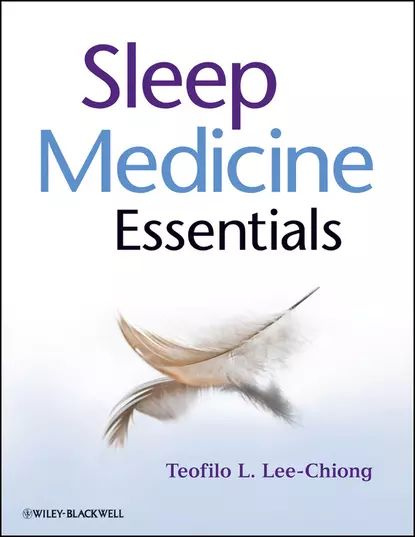
Navigating Surgical and Procedural Terminology
Surgical and procedural terms can be particularly daunting for patients. However, understanding these terms is crucial for informed consent and proper preparation for medical procedures.
Common Surgical Terms
- Incision: A cut made during surgery
- Sutures: Stitches used to close wounds
- Anesthesia: Medication to prevent pain during surgery
- Laparoscopy: Minimally invasive surgery using small incisions
- Graft: Tissue or organ transplanted from one site to another
- Resection: Surgical removal of all or part of an organ or structure
Procedural Terminology
- Intubation: Insertion of a tube into the trachea to assist breathing
- Catheterization: Insertion of a thin tube into a body cavity or vessel
- Aspiration: Removal of fluid or tissue using suction
- Debridement: Removal of dead, damaged, or infected tissue
- Lavage: Washing out of an organ or body cavity
Familiarity with these surgical and procedural terms can help alleviate anxiety and improve patient understanding of proposed medical interventions.

In conclusion, mastering these 75 essential medical terms, abbreviations, and acronyms can significantly enhance a patient’s ability to navigate the complex world of healthcare. By understanding this vocabulary, patients can communicate more effectively with their healthcare providers, better comprehend their medical conditions and treatment plans, and take a more active role in their own health management. Remember, when in doubt, always ask your healthcare provider for clarification – they are there to help you understand your health and make informed decisions.
Blog | Important Medical Terms You Need To Know
These medical terms will keep you informed not only in daily conversation but in situations when they matter most.
by Bobby Macey
Have you ever been watching a live sporting event when an athlete suddenly left the game due to injury? Of course you have. The media coverage goes to commercial and at the first glance of a medical update, the sports broadcaster is back on live TV saying something about a “contusion” or “abrasion.”
One of two things usually happens from there. One, you may think it’s ridiculous that the media referred to a bruise as a contusion, or a scrape as an abrasion. Two, this may actually pique a desire in you to learn some medical vocabulary. For most of us, it’s probably the first.
It’s helpful to know commonly used medical terms, so we’ve compiled a list of 25 that will surely get you through a live sports broadcast, and help you out next time you’re at the doctor’s office.
- Benign: Not cancerous
- Malignant: Cancerous
- Anti-inflammatory: Reduces swelling, pain, and soreness (such as ibuprofen or naproxen)
- Body Mass Index (BMI): Body fat measurement based on height and weight
- Biopsy: A tissue sample for testing purposes
- Hypotension: Low blood pressure
- Hypertension: High blood pressure
- Lesion: Wound, sore, or cut
- Noninvasive: Doesn’t require entering the body with instruments; usually simple
- Outpatient: Check in and check out the same day
- Inpatient: Plan to stay overnight for one or more days
- In remission: Disease is not getting worse; not to be confused with being cured
- Membrane: Thin layer of pliable tissue that serves as a covering or lining or connection between two structures
- Acute: Sudden but usually short (e.g., acute illness)
- Angina: Pain in the chest related to the heart that comes and goes
- Gastroesophageal Reflux Disease (GERD): Heartburn
- Cellulitis: Inflamed or infected tissue beneath the skin
- Epidermis: Outermost layer of skin
- Neutrophils: Most common type of white blood cell
- Edema: Swelling
- Embolism: Blood clot
- Sutures: Stitches
- Polyp: Mass or growth of thin tissue
- Compound fracture: Broken bone that protrudes through the skin
- Comminuted fracture: Broken bone that shatters into many pieces
Next time you hear one of these terms—whether on TV, in a medical environment, or elsewhere—you won’t miss a beat. Just beware, you may be asked to translate for others.
Just beware, you may be asked to translate for others.
About The Author
Bobby Macey is a marketer and writer by trade. He’s been published nationally and writes on myriad topics—particularly healthy living.
Related Articles
Why Select Health?
We are champions of healthy—and we think you can be, too. That’s why we’re doing everything we can to make your experience with Select Health a positive one.
Why Select Health?
We are champions of healthy—and we think you can be, too. That’s why we’re doing everything we can to make your experience with Select Health a positive one.
Preventive Care for Men and Women: Cancer Screenings
Preventive care can help you gauge your current health status and find out ways to protect it now and in the future. Follow these recommendations for getting screened for cancer.
Select Health Care Managers Can Help You with Chronic Conditions and Many Other Healthcare Needs
Need help managing your diabetes, asthma, or other chronic condition? Support from a Select Health care manager is just a phone call away.
About The Author
Bobby Macey is a marketer and writer by trade. He’s been published nationally and writes on myriad topics—particularly healthy living.
75 Must-Know Medical Terms, Abbreviations, and Acronyms
Skip to content
While most of us don’t need to understand discipline-specific jargon outside of our own profession, medical terminology is a notable exception. We all need to know what’s going on with our health.
Fans of medical TV shows might already be familiar with some common terms. Even so, rounding out your existing knowledge with some additional medical terms, abbreviations, and acronyms can help you gain an even better handle on what you hear in the health care world. This list can help you get started.
Breaking down common medical terminology
The world of medical terminology is quite vast, so this list is organized by category to make it a little easier to digest. If you’re looking for something in particular, use the links below to jump to the relevant section.
- Medical terms
- Medical prefixes and suffixes
- Medical root words
- Medical abbreviations and acronyms
Medical terms
The charts providers use for making notes are often filled with this kind of medical terminology. You might even know some of them by a different name.
1. Abrasion: A cut or scrape that typically isn’t serious.
2. Abscess: A tender, fluid-filled pocket that forms in tissue, usually due to infection.
3. Acute: Signifies a condition that begins abruptly and is sometimes severe, but the duration is short.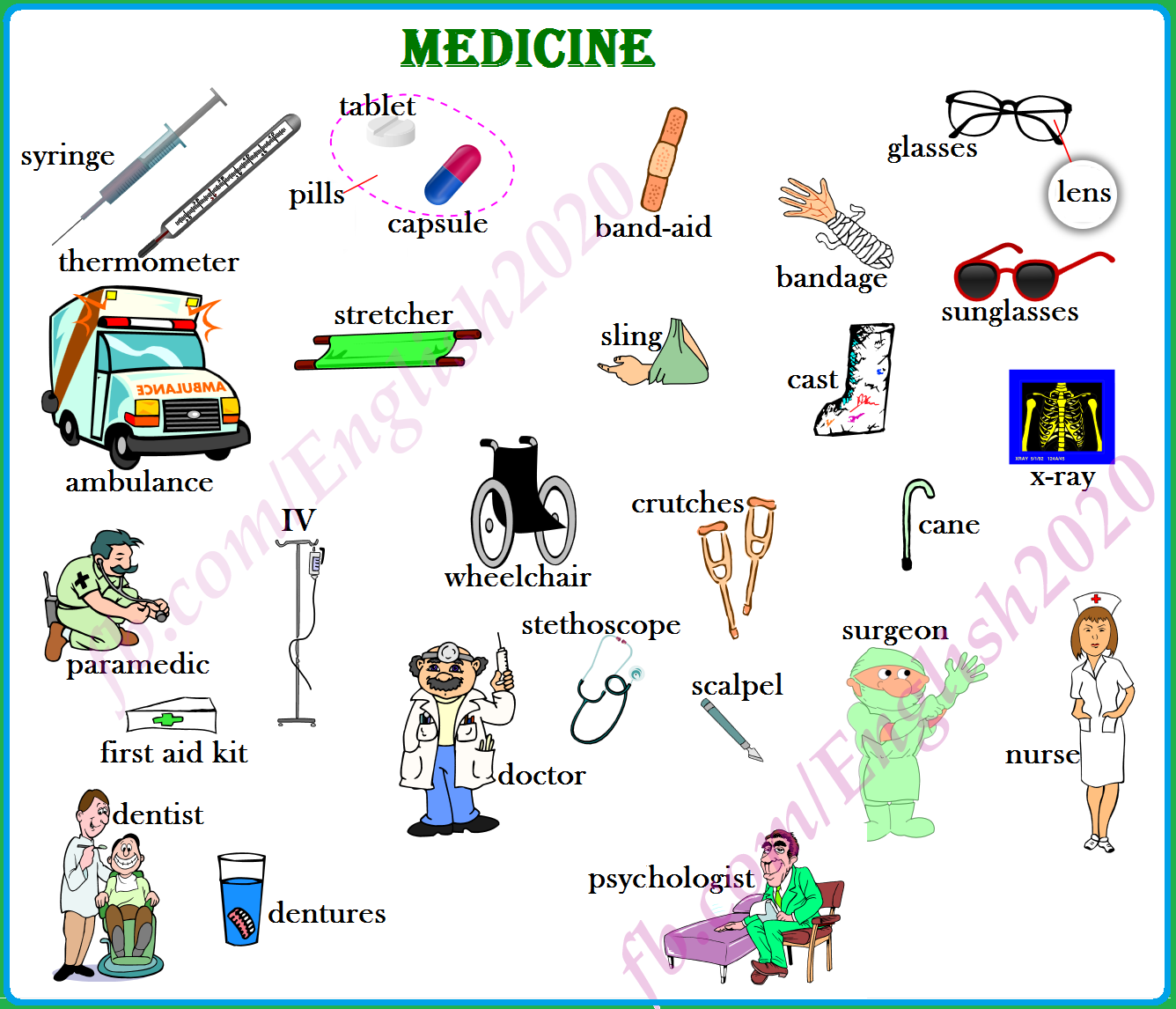
4. Benign: Not cancerous.
5. Biopsy: A small sample of tissue that’s taken for testing.
6. Chronic: Signifies a recurring, persistent condition like heart disease.
7. Contusion: A bruise.
8. Defibrillator: A medical device that uses electric shocks to restore normal heartbeat.
9. Edema: Swelling caused by fluid accumulation.
10. Embolism: An arterial blockage, often caused by a blood clot.
11. Epidermis: The outer layer of the skin.
12. Fracture: Broken bone or cartilage.
13. Gland: An organ or tissue that produces and secretes fluids that serve a specific function.
14. Hypertension: High blood pressure.
15. Inpatient: A patient who requires hospitalization.
16. Intravenous: Indicates medication or fluid that’s delivered by vein.
17. Malignant: Indicates the presence of cancerous cells.
18. Outpatient: A patient who receives care without being admitted to a hospital.
19. Prognosis: The predicated outcome of disease progression and treatment.
20. Relapse: Return of disease or symptoms after a patient has recovered.
21. Sutures: Stitches, which are used to join tissues together as they heal.
22. Transplant: The removal of an organ or tissue from one body that is implanted into another.
23. Vaccine: A substance that stimulates antibody production to provide immunity against disease.
24. Zoonotic disease: A disease that is transmissible from animals to humans.
Medical prefixes and suffixes
Medical terminology follows the same structural rules all language does, including use of prefixes and suffixes. You may be familiar with some of these from words outside the realm of medicine.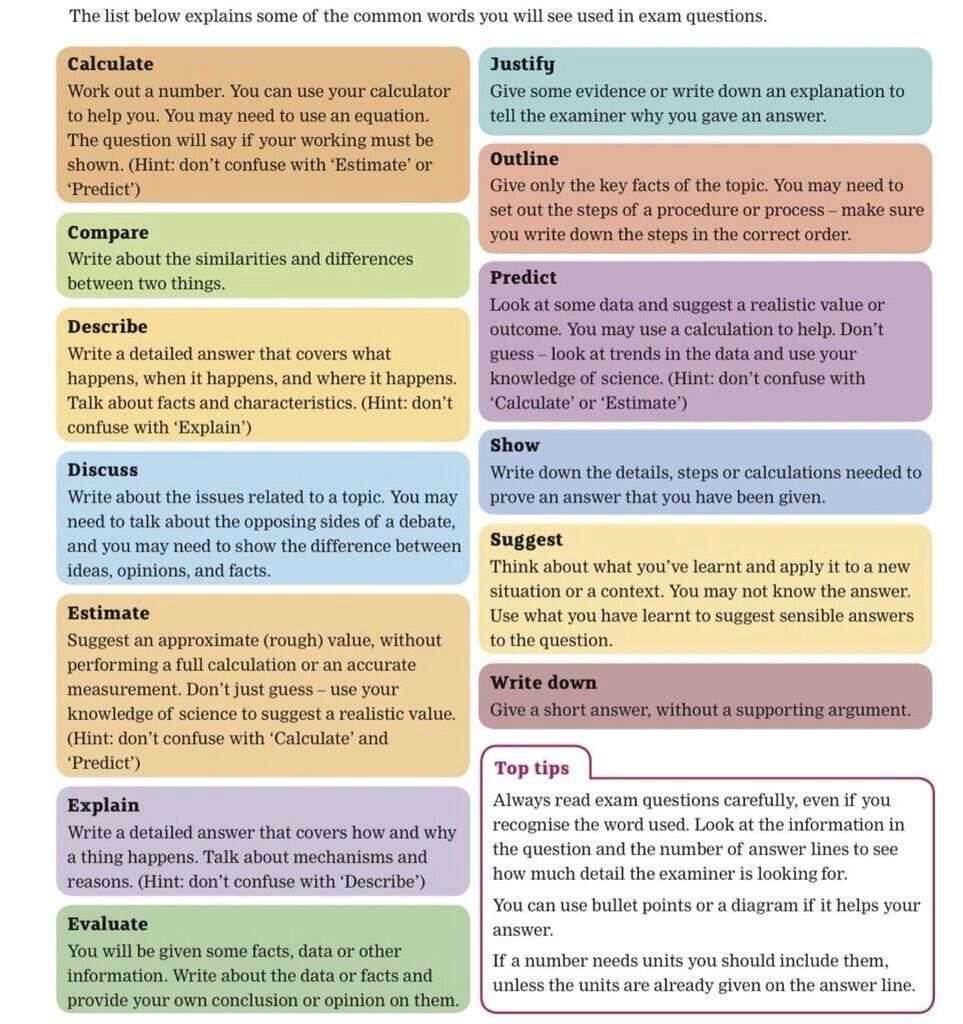
25. A-, an-: Lack of or without.
26. -ation: Indicates a process.
27. Dys-: Abnormal, difficult, or painful.
28. -ectomy: Surgical removal of something.
29. -ismus: Indicates a spasm or contraction.
30. -itis: Signifies inflammation.
31. -lysis: Decomposition, destruction, or breaking down.
32. Macro-: Large in size.
33. Melan/o-: Black or dark in color.
34. Micro-: Small in size.
35. -ology: The study of a particular concentration.
36. -osis: Indicates something that is abnormal.
37. -otomy: To cut into.
38. -pathy: Disease or disease process.
39. -plasty: Surgical repair.
40. Poly-: Many.
41. Pseudo-: False or deceptive, usually in regard to appearance.
42. Retro-: Behind or backward.
Medical root words
Some medical root words are intuitive simply based on your experiences. If you’re an athletic person, for example, you probably know cardiovascular exercise is any activity that gets your heart rate pumping.
43. Cardi/o: Related to the heart.
44. Derm/a/o, dermat/o: Pertaining to the skin.
45. Encephal/o: Related to the brain.
46. Gastr/o: Related to the stomach.
47. Hemat/o: Pertaining to blood.
48. My/o: Related to muscle.
49. Oste/o: Related to bone.
50. Pulmon/o: Refers to the lungs.
51. Rhin/o: Related to the nose.
52. Sclerosis: Hard or hardening.
53. Stasis: Slowing or stopping the flow of a bodily fluid.
54. Therm/o: Indicates heat.
Medical abbreviations and acronyms
There are many more medical acronyms and abbreviations than what’s listed below.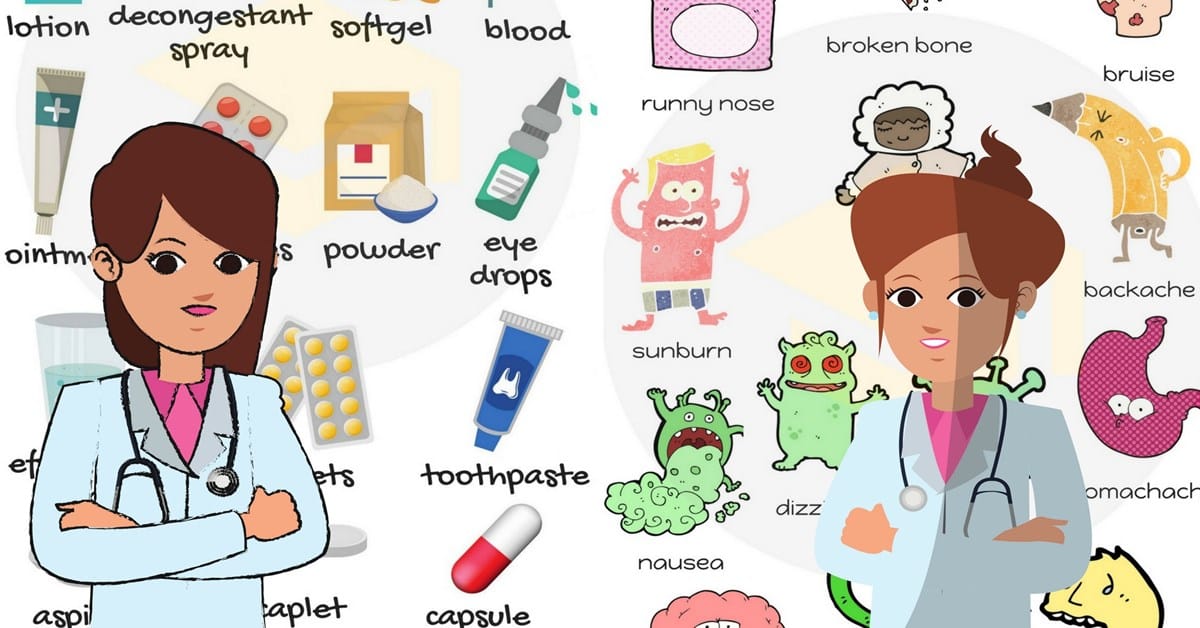 But unless you’re planning to become a doctor or another type of provider, this condensed lineup should get you up to speed.
But unless you’re planning to become a doctor or another type of provider, this condensed lineup should get you up to speed.
55. ALS: Advanced life support.
56. Bl wk: Blood work.
57. BMI: Body mass index, a measure of body fat based on height and weight.
58. BP: Blood pressure.
59. CPR: Cardiopulmonary resuscitation, a life-saving technique that’s also called mouth-to-mouth resuscitation.
60. C-spine: Cervical spine.
62. DNR: Do not resuscitate, a medical order indicating providers should not perform CPR.
63. ED/ER: Emergency department or emergency room.
64. EKG: Electrocardiogram, a way of monitoring the heart and testing for problems.
65. HDL-C: High-density lipoprotein cholesterol, often called “good” cholesterol.
66. HR: Heart rate, expressed as beats per minute.
67. LDL-C: Low-density lipoprotein cholesterol, often called “bad” cholesterol.
68. Lytes: Electrolytes.
69. NICU: Neonatal intensive care unit, a specialized unit that cares for premature infants.
70. OR: Operating room where surgeries are performed.
71. Pre-op: Preoperative.
72. Psych: Refers to psychiatry or the psychiatric ward.
73. PT: Physical therapy, a type of treatment to help patients move and feel better.
74. Rx: Prescription, usually for medication but can also signify another treatment.
75. Stat: Immediately.
What if you don’t see the medical term you’re looking for?
This medical terminology cheat sheet covers a lot of ground, but there will likely be times when you hear something unfamiliar. When you come across a medical term you don’t recognize, be sure to ask for clarity. Patient education is a huge part of a physician’s job. Doctors aim to foster an environment that generates dialogue.
Patient education is a huge part of a physician’s job. Doctors aim to foster an environment that generates dialogue.
Having thoughtful conversations with your physician is about more than just gaining knowledge. In fact, engaging with your doctor could result in a healthier life. Some evidence shows the most engaged patients tend to have better outcomes. You are your own best advocate.
Advance your knowledge of medical terminology
It’s clear that you can benefit from having these medical terms at your disposal, especially when it comes to speaking one-on-one with your physician. If you don’t happen to have a physician you regularly see, it’s wise to start looking so you can maintain good health.
Learn how you can find the right provider by reading our article “How to Choose a Doctor: What You Should Look for in a Primary Care Physician.”
*This article was originally published in May 2019. It was updated in 2022 to include additional information.
While most of us don’t need to understand discipline-specific jargon outside of our own profession, medical terminology is a notable exception. We all need to know what’s going on with our health.
Fans of medical TV shows might already be familiar with some common terms. Even so, rounding out your existing knowledge with some additional medical terms, abbreviations, and acronyms can help you gain an even better handle on what you hear in the health care world. This list can help you get started.
Breaking down common medical terminology
The world of medical terminology is quite vast, so this list is organized by category to make it a little easier to digest. If you’re looking for something in particular, use the links below to jump to the relevant section.
- Medical terms
- Medical prefixes and suffixes
- Medical root words
- Medical abbreviations and acronyms
Medical terms
The charts providers use for making notes are often filled with this kind of medical terminology.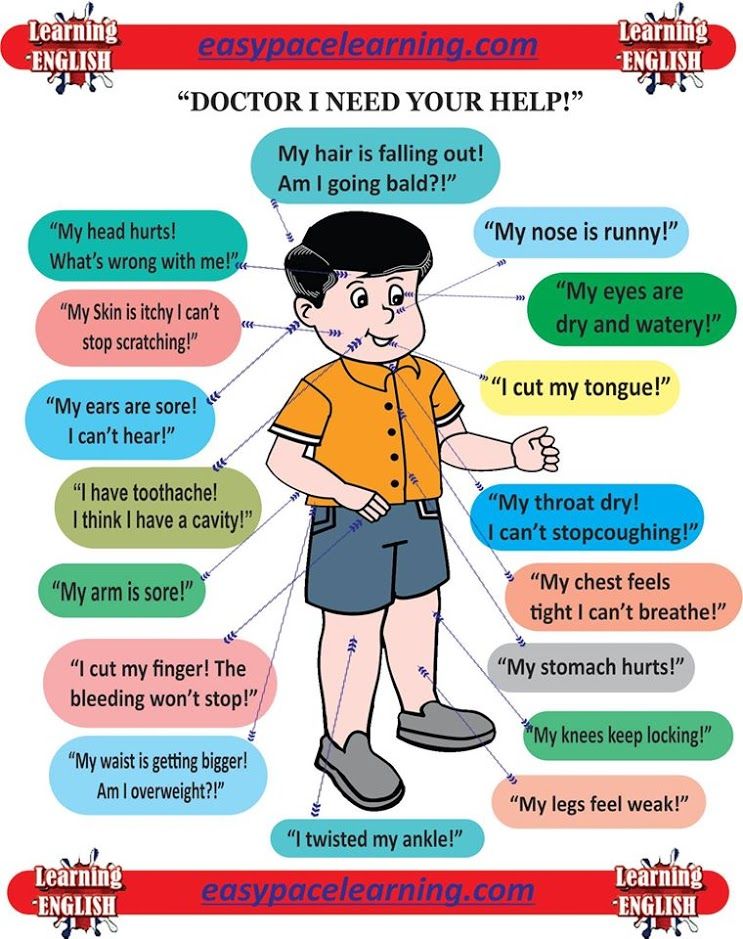 You might even know some of them by a different name.
You might even know some of them by a different name.
1. Abrasion: A cut or scrape that typically isn’t serious.
2. Abscess: A tender, fluid-filled pocket that forms in tissue, usually due to infection.
3. Acute: Signifies a condition that begins abruptly and is sometimes severe, but the duration is short.
4. Benign: Not cancerous.
5. Biopsy: A small sample of tissue that’s taken for testing.
6. Chronic: Signifies a recurring, persistent condition like heart disease.
7. Contusion: A bruise.
8. Defibrillator: A medical device that uses electric shocks to restore normal heartbeat.
9. Edema: Swelling caused by fluid accumulation.
10. Embolism: An arterial blockage, often caused by a blood clot.
11. Epidermis: The outer layer of the skin.
12. Fracture: Broken bone or cartilage.
13. Gland: An organ or tissue that produces and secretes fluids that serve a specific function.
14. Hypertension: High blood pressure.
15. Inpatient: A patient who requires hospitalization.
16. Intravenous: Indicates medication or fluid that’s delivered by vein.
17. Malignant: Indicates the presence of cancerous cells.
18. Outpatient: A patient who receives care without being admitted to a hospital.
19. Prognosis: The predicated outcome of disease progression and treatment.
20. Relapse: Return of disease or symptoms after a patient has recovered.
21. Sutures: Stitches, which are used to join tissues together as they heal.
22. Transplant: The removal of an organ or tissue from one body that is implanted into another.
23. Vaccine: A substance that stimulates antibody production to provide immunity against disease.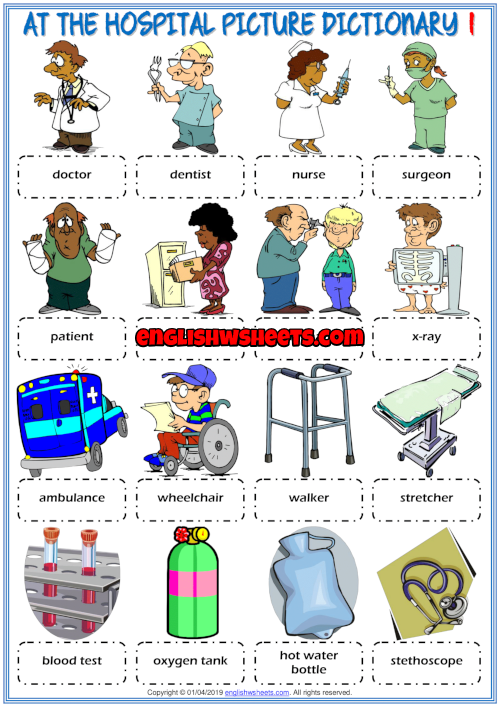
24. Zoonotic disease: A disease that is transmissible from animals to humans.
Medical prefixes and suffixes
Medical terminology follows the same structural rules all language does, including use of prefixes and suffixes. You may be familiar with some of these from words outside the realm of medicine.
25. A-, an-: Lack of or without.
26. -ation: Indicates a process.
27. Dys-: Abnormal, difficult, or painful.
28. -ectomy: Surgical removal of something.
29. -ismus: Indicates a spasm or contraction.
30. -itis: Signifies inflammation.
31. -lysis: Decomposition, destruction, or breaking down.
32. Macro-: Large in size.
33. Melan/o-: Black or dark in color.
34. Micro-: Small in size.
35. -ology: The study of a particular concentration.
36. -osis: Indicates something that is abnormal.
37. -otomy: To cut into.
38. -pathy: Disease or disease process.
39. -plasty: Surgical repair.
40. Poly-: Many.
41. Pseudo-: False or deceptive, usually in regard to appearance.
42. Retro-: Behind or backward.
Medical root words
Some medical root words are intuitive simply based on your experiences. If you’re an athletic person, for example, you probably know cardiovascular exercise is any activity that gets your heart rate pumping.
43. Cardi/o: Related to the heart.
44. Derm/a/o, dermat/o: Pertaining to the skin.
45. Encephal/o: Related to the brain.
46. Gastr/o: Related to the stomach.
47. Hemat/o: Pertaining to blood.
48. My/o: Related to muscle.
49. Oste/o: Related to bone.
Oste/o: Related to bone.
50. Pulmon/o: Refers to the lungs.
51. Rhin/o: Related to the nose.
52. Sclerosis: Hard or hardening.
53. Stasis: Slowing or stopping the flow of a bodily fluid.
54. Therm/o: Indicates heat.
Medical abbreviations and acronyms
There are many more medical acronyms and abbreviations than what’s listed below. But unless you’re planning to become a doctor or another type of provider, this condensed lineup should get you up to speed.
55. ALS: Advanced life support.
56. Bl wk: Blood work.
57. BMI: Body mass index, a measure of body fat based on height and weight.
58. BP: Blood pressure.
59. CPR: Cardiopulmonary resuscitation, a life-saving technique that’s also called mouth-to-mouth resuscitation.
60. C-spine: Cervical spine.
62. DNR: Do not resuscitate, a medical order indicating providers should not perform CPR.
63. ED/ER: Emergency department or emergency room.
64. EKG: Electrocardiogram, a way of monitoring the heart and testing for problems.
65. HDL-C: High-density lipoprotein cholesterol, often called “good” cholesterol.
66. HR: Heart rate, expressed as beats per minute.
67. LDL-C: Low-density lipoprotein cholesterol, often called “bad” cholesterol.
68. Lytes: Electrolytes.
69. NICU: Neonatal intensive care unit, a specialized unit that cares for premature infants.
70. OR: Operating room where surgeries are performed.
71. Pre-op: Preoperative.
72. Psych: Refers to psychiatry or the psychiatric ward.
73. PT: Physical therapy, a type of treatment to help patients move and feel better.
74. Rx: Prescription, usually for medication but can also signify another treatment.
75. Stat: Immediately.
What if you don’t see the medical term you’re looking for?
This medical terminology cheat sheet covers a lot of ground, but there will likely be times when you hear something unfamiliar. When you come across a medical term you don’t recognize, be sure to ask for clarity. Patient education is a huge part of a physician’s job. Doctors aim to foster an environment that generates dialogue.
Having thoughtful conversations with your physician is about more than just gaining knowledge. In fact, engaging with your doctor could result in a healthier life. Some evidence shows the most engaged patients tend to have better outcomes. You are your own best advocate.
Advance your knowledge of medical terminology
It’s clear that you can benefit from having these medical terms at your disposal, especially when it comes to speaking one-on-one with your physician. If you don’t happen to have a physician you regularly see, it’s wise to start looking so you can maintain good health.
If you don’t happen to have a physician you regularly see, it’s wise to start looking so you can maintain good health.
Learn how you can find the right provider by reading our article “How to Choose a Doctor: What You Should Look for in a Primary Care Physician.”
*This article was originally published in May 2019. It was updated in 2022 to include additional information.
Related
Articles
Page load link
Go to Top
PROFESSIONALISMS IN DOCTORS
Professionalisms are very interesting words. They are used by representatives of a certain professional field and are sometimes understood only by them. For example, the steering wheel for drivers is a steering wheel, a large heading for printers is a hat, etc. Doctors have such words. Read the most interesting of them below.
Voice – walkie-talkie (in the speech of ambulance officers).
Track – car accident (in the speech of ambulance officers).
Iolka, IOL – intraocular lens (in the speech of ophthalmologists).
Covidnik is a hospital where patients with coronavirus infection are treated.
Covid (sick or hospital) – a place where patients with coronavirus infection are treated, or someone who has COVID-19.
Contact – someone who has been in contact with a COVID-19 patient.
Corona is a coronavirus infection. By the way, why “coronavirus” and not “coronavirus”? It’s simple: this is a Latin medical term (coronavirus), which began to be written in Russian in the same way as in Latin. And in general, the vowel “a” in “crown” is not a connecting vowel, but part of the first root.
“Red Zone” – a room where patients with coronavirus infection are located.
Atrial fibrillation, atrial fibrillation – atrial fibrillation.
Ambulance is a medical emergency.
Skoryak – ambulance.
Light – light filling (in the speech of dentists).
Flyura, stick – fluorography.
Chemistry – chemical filling (in the speech of dentists).
Cheeks, beaks – forceps (in the speech of dentists).
ECG – electrocardiogram.
Epidural, epidura – epidural anesthesia.
And that, of course, is not all… In every region, even in every single hospital, doctors can use their own special words to denote certain phenomena: diagnoses, instruments. And that’s all for me. Be healthy!
Valeria Filimonova
SUMMER WITH YOUR HANDS
July 7, 18:44
The first month of summer in Perm this year is rich in holidays. June 24 at MADOU “Kindergarten “Electronic”” was held the III annual city festival “RUkami”. Young athletes and sportswomen, masters and craftswomen, painters and artists showed their skills and abilities at more than thirty master classes. It was not only a fun holiday for children and their parents, but also a useful event, in which everyone received unforgettable emotions and memorable gifts made by their own hands.
It was not only a fun holiday for children and their parents, but also a useful event, in which everyone received unforgettable emotions and memorable gifts made by their own hands.
Read more
“WHAT DO YOU HAVE?”: WE TALK ABOUT LEADERS’ MOVEMENT
July 7, 18:40
Is Monday a hard day? Perhaps… But not for schoolchildren in the Ordzhonikidzevsky district. On June 26, while all schoolchildren officially have a rest on vacation, in MAOU “Secondary School No. 24” the children organized an informal meeting with other active students from neighboring schools. The children’s initiative was supported by sensitive teachers and educational advisers. And what happened with the creative team, we tell in the material.
Read more
SUMMER AT SCHOOL
July 6, 18:35
The doors of MAOU “Secondary School No. 32” are open to her young wards even in the summer. For many years, the school has been organizing a day camp, which gives the children positive emotions and unforgettable memories. The head teacher for educational work Yulia Stanislavovna Verzakova shared with us how the summer leisure of students is organized within the walls of the school.
The head teacher for educational work Yulia Stanislavovna Verzakova shared with us how the summer leisure of students is organized within the walls of the school.
Read more
Professional words of the Russian language, terms and terminology
Words of the Russian language,
search and analysis of words online
Contents of the article:
What are professional words? Terms and terminology Examples Comments
What are professional words?
Professional words – words used in the speech of people of any profession, specialty, field of activity. Used by specialists and experts in combination with commonly used words. Separate professional words become common, they are understandable to non-professionals. For example: arch, radio, screen, antibiotic. Professional words are found in fiction for a more accurate description of the type of activity of people. They are called professionalism. Professional words (or professionalisms) should not be confused with professional slang, which refers to jargon and is outside the norms of the literary language.
Terms and terminology
Among professional words, terms stand out – words that name the concepts of different sciences and specify the field of human knowledge. For example: integral, convergence (in mathematics), rift, magma (in geography), anamnesis, depressor (in medicine). A set of terms within one science or one direction is called terminology. For example: medical, architectural terminology. The study of terms and terminological systems falls into the field of applied linguistics – terminology. Collections of terms contain a list of terms in a particular field of knowledge.
Examples
List of professional words from various sciences and fields of human activity.
Architectural terms
- Arcade (from the French arcade) – a series of arches of the same shape and size, based on columns or pillars. Most often used in the construction of open galleries.
- Balusters – low figured columns supporting the railings of balconies, stairs, etc.

- Interior (from the French interieur – internal) – the interior space of the room.
- Cornice (from German karnies; original source: Greek korwni – conclusion, end) – a horizontal ledge on the wall that supports the roof (covering) of the building and protects the wall from flowing water, also has a decorative value.
- Stucco – relief decorations (shaped and ornamental) on the facades and interiors of buildings, as a rule, cast or pressed from plaster, plaster, concrete or other materials.
Medical terms
- Abductor (musculus abductor; lat. abduco, abductum abduct) is a muscle that abducts a limb or part of it, such as a finger.
- Insomnia (syn.: agripnia, asomnia, dyssomnia, insomnia) is a sleep disorder manifested by sleep disturbance, intermittent, superficial sleep or premature awakening.
- Virus (lat. virus poison) – non-cellular life forms that have a genome (DNA or RNA), but lack their own synthesizing apparatus and are capable of reproducing only in the cells of more highly organized creatures.

- Hematoma (haematoma; hemato- + -oma; syn. blood tumor) – a limited accumulation of blood in tissues with the formation of a cavity in them containing liquid or clotted blood.
- Heart rate tachometer (pulse + Greek tachos speed + metreo measure; syn. pulse counter) – a device for continuous measurement of heart rate.
Geographical terms
- Water area (lat. aqua – water and terra – country) – a water surface, as well as each of its natural or artificial sections separately: sea, lake, reservoir, bay and others.
- Barkhan (from Turk. – mobile hill) – crescent-shaped sandy hill, blown by the wind and not fixed by vegetation in deserts and semi-deserts.
- Magma (Greek magma – thick ointment) is a mixture of numerous chemical compounds and elements, including volatile ones, melted to a high-temperature viscous-liquid state.
- A cape is a section of coast that juts out into the sea, lake or river in the form of a sharp ledge.


